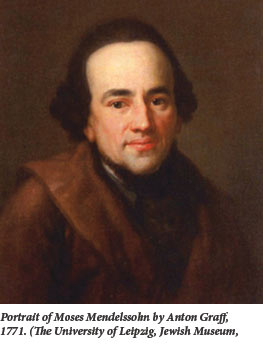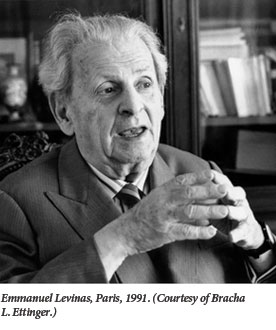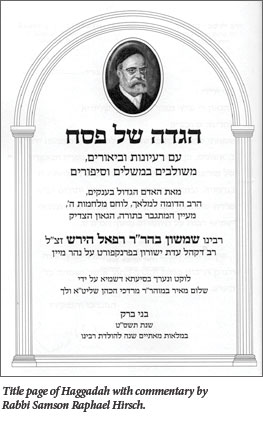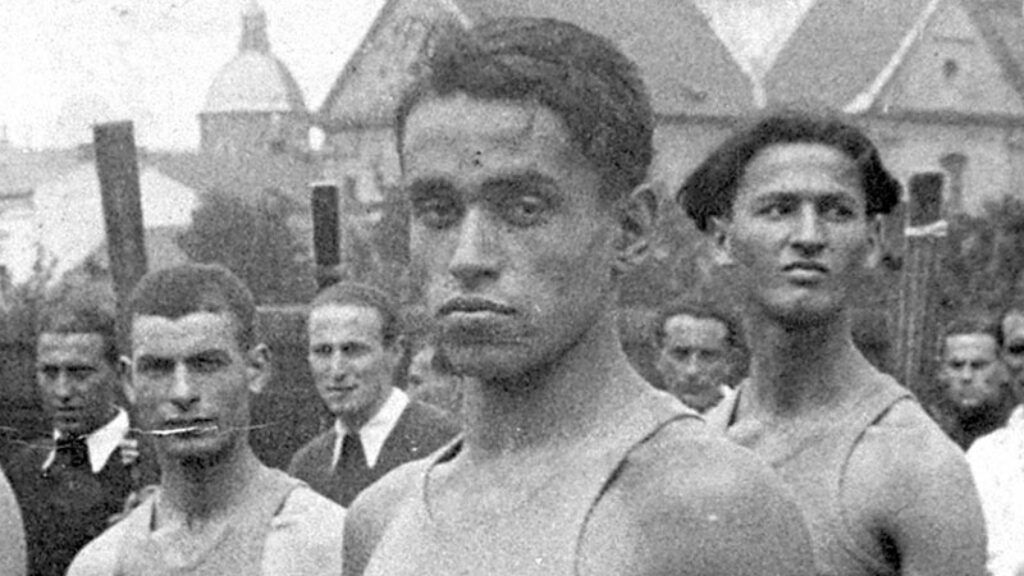Are We All Protestants Now?
Leora Batnitzky’s How Judaism Became a Religion is a bold new interpretation of modern Jewish thought by one of the leading scholars in the field. The fruit of an undergraduate course that she has been teaching at Princeton for over a decade, it provides a panoramic view of Jewish efforts to come to terms with modernity. Unlike Julius Guttmann, whose chapters on modern Jewish thought in his 1933 classic The Philosophy of Judaism are confined almost entirely to German-Jewish philosophers, Batnitzky ranges widely. Although she covers the German high philosophical tradition from Moses Mendelssohn forward, she also discusses German-Jewish theologians and historians like Abraham Geiger, Samson Raphael Hirsch, and Heinrich Graetz; Eastern European Yiddishists, Zionists, and ultra-Orthodox thinkers, and Americans from Mordecai Kaplan to Leo Strauss. This is not to say that Batnitzky has been entirely comprehensive. Italians and Sephardim, modern mystics, and feminist theologians are largely absent from her account. But it would scarcely have been possible for her to deal with every important group of modern Jewish thinkers in a thematic study of roughly two hundred pages.
Batnitzky anchors these thinkers in their social and political context. Historians of Jewish thought have all too often taken a “history of ideas” approach, in which later writers are described as solving philosophical problems that they uncover in earlier writers only to generate new problems to be solved by the next generation. Batnitzky shows that Jewish thought is a historical phenomenon that cannot be separated from the political fate of the Jewish people. This gives her book a sense of real intellectual urgency.
Her unifying thesis is that modern Jewish thinkers invented the notion that Judaism is a religion in response to the distinctive challenges of European modernity. In the pre-modern period, “it simply was not possible . . . to conceive Jewish religion, nationality, and what we call culture as distinct from one another.” This was because Jewish communities were corporate entities whose authority over their members was recognized by the state. The community collected taxes, adjudicated civil disputes through rabbinic courts, and enforced halakhic norms by punishing religious deviants through fines, corporal punishments, or excommunication.
When enlightened thinkers proposed that the Jews be incorporated into European states as fully equal citizens, their opponents argued against emancipation on the grounds that the Jews formed a separate and inherently disloyal nation. In response to this accusation, Batnitzky claims, Western European Jewish thinkers began to conceive of Judaism as a religion in the Protestant sense. Since religion in this sense “denotes a sphere of life separate and distinct from all others,” a sphere that is “largely private and not public, voluntary and not compulsory,” people who were Jews solely by religion ought to be considered just as eligible for citizenship as anyone else.
Elsewhere, the situation was different. By the end of the 18th century, Batnitzky notes, “the Habsburg, Ottoman, and Russian Empires had absorbed all of the previously independent countries of Eastern and Central Europe,” and retained corporate structures composed of estates. These states continued to define Jews “legally, politically, and theologically” as members of the Jewish community. Consequently, the notion of Judaism as a religion “was largely irrelevant” to 19th-century Eastern European Jews, who proceeded, as they encountered modernity, to develop notions of Jewish affiliation that highlighted national and cultural distinctiveness.
 Batnitzky begins her account with the great 18th-century philosopher Moses Mendelssohn, whom she credits with being, or whom she identifies as the inventor of “the modern idea that Judaism is a religion.” Rejecting the arguments of the opponents of Jewish Emancipation in Prussia, Mendelssohn maintained that adherence to Judaism did not conflict with the demands of citizenship since Judaism was an apolitical religion centered around voluntary commitment to halakha. According to Batnitzky, Mendelssohn acknowledged that the Jews remained a theological community, but he denied that they shared a national Jewish identity.
Batnitzky begins her account with the great 18th-century philosopher Moses Mendelssohn, whom she credits with being, or whom she identifies as the inventor of “the modern idea that Judaism is a religion.” Rejecting the arguments of the opponents of Jewish Emancipation in Prussia, Mendelssohn maintained that adherence to Judaism did not conflict with the demands of citizenship since Judaism was an apolitical religion centered around voluntary commitment to halakha. According to Batnitzky, Mendelssohn acknowledged that the Jews remained a theological community, but he denied that they shared a national Jewish identity.
Batnitzky argues that both Reform Judaism and Modern Orthodoxy followed Mendelssohn in defining Judaism as a religion, although, of course, they did so in different ways. Abraham Geiger, the ideological father of 19th-century Reform Judaism, described Judaism as the voluntary acceptance of a set of theological beliefs that were both rational and moral. Hermann Cohen, the most distinguished philosopher associated with Reform, defined the “genuine Jew” as an ethical monotheist. The Orthodox thinker Samson Raphael Hirsch, a contemporary of Geiger’s, argued that “genuine Judaism” was constituted by a community of individuals united by their voluntary commitment to halakha as the immutable word of God. In 1876, Hirsch led his community in Frankfurt to secede from the mainstream Jewish community, which was then controlled by Reformers, by invoking the right to freedom of conscience. Hirsch, no less than Geiger, invoked a distinctly Protestant and distinctively modern and notion of religion to frame and defend his position.
In the 20th century, the preeminent Modern Orthodox thinker, Joseph Soloveitchik described Judaism as a halakhic system, which “is not political but instead concerns the intellectual and spiritual dimensions of human experience.” This highlights the way in which, the primacy of halakha notwithstanding, Soloveitchik is part of the same discourse as the great early 20th-century “philosophers of Jewish experience,” Martin Buber and Franz Rosenzweig.
The Orthodox identification of Judaism with halakhic observance received its most extreme expression in the thought of Yeshayahu Leibowitz who disconnected halakhic observance so completely from scientific truth, ethics, and politics that he labeled any attempt to link it with these spheres as idolatrous. In a characteristically penetrating observation, Batnitzky notes that “Leibowitz’s notion of Judaism is . . . more Protestant than either Soloveitchik or Cohen’s conceptions.”
Batnitzky’s analytic focus allows her to group thinkers in unconventional ways throughout the book. Thus, she concludes her discussion of “Judaism as a Religion,” with the Religious Zionists thinkers Abraham Isaac Kook, his son Zvi Yehuda Kook, and the French phenomenologist Emmanuel Levinas. She frankly acknowledges that her thesis is less than completely applicable to the younger Kook and Levinas, since they both “reject the promise of modernity as expressed in the modern nation-state as well as the privatization of religion.” Rather than believing that religion required legitimation from the nation-state, Kook and Levinas claim that, “only the Jewish religion . . . can justify and give meaning to the state.” Still, these thinkers belong in the part of her book entitled “Judaism as a Religion,” since they continue to “view modern Judaism in terms of the relation between religion on one side and politics of sovereign national states on other.” While inverting the relationship between the two, they “do not change the terms of the conversation.”
 Batnitzky begins the second part of her book, “Detaching Judaism from Religion” by grouping three trends together: Eastern European Hasidism as exemplified by the movement’s 18th-century founder Israel Ba’al Shem Tov; Jewish freethinking as exemplified by the Lithuanian-Jewish philosopher and skeptic Solomon Maimon; and highly creative Talmud study as exemplified by the 19th-century Lithuanian Volozhin yeshiva under the leadership of R. Hayyim of Volozhin. Batnitzky claims that what unites these three seemingly divergent approaches to Judaism is their common stress on individuality, whether through communion with God (Ba’al Shem Tov), the freedom to reason (Maimon), or Torah study for its own sake (R. Hayyim of Volozhin). She does not, however, go so far as to claim that these three figures adopted a Protestant view of religion, since all of them were engaged in spiritual quests that took place “against the backdrop of a Jewish communal life that however weakened, shares common forms of public practice and speculation, otherwise known as religious law and tradition.”
Batnitzky begins the second part of her book, “Detaching Judaism from Religion” by grouping three trends together: Eastern European Hasidism as exemplified by the movement’s 18th-century founder Israel Ba’al Shem Tov; Jewish freethinking as exemplified by the Lithuanian-Jewish philosopher and skeptic Solomon Maimon; and highly creative Talmud study as exemplified by the 19th-century Lithuanian Volozhin yeshiva under the leadership of R. Hayyim of Volozhin. Batnitzky claims that what unites these three seemingly divergent approaches to Judaism is their common stress on individuality, whether through communion with God (Ba’al Shem Tov), the freedom to reason (Maimon), or Torah study for its own sake (R. Hayyim of Volozhin). She does not, however, go so far as to claim that these three figures adopted a Protestant view of religion, since all of them were engaged in spiritual quests that took place “against the backdrop of a Jewish communal life that however weakened, shares common forms of public practice and speculation, otherwise known as religious law and tradition.”
At the heart of Batnitzky’s argument is her multi-dimensional account of the Protestant conception of religion:
(a)”Religion denotes a sphere of life separate and distinct from all others” such as “politics, morality, science and economics.”
(b) Religion is a “largely private affair, not public.”
(c) Religion is “voluntary and not compulsory.”
(d) Religion is about “personal belief or faith,” which she contrasts with the view that religion is primarily about ritual practice of “performance.”
 The problem with this is that no figure that Batnitzky discusses in the “Judaism as a Religion” section (Part I) of the book actually defines Judaism as possessing all four of these characteristics. Further, some of the figures Batnitzky describes in Part II (“Detaching Judaism from Religion”) possess at least some of them.
The problem with this is that no figure that Batnitzky discusses in the “Judaism as a Religion” section (Part I) of the book actually defines Judaism as possessing all four of these characteristics. Further, some of the figures Batnitzky describes in Part II (“Detaching Judaism from Religion”) possess at least some of them.
Mendelssohn, the seminal figure in Part I, stresses that Judaism must be based on rational conviction and rejects religious coercion. In this sense, he seems to accept (a) and (c). But Mendelssohn’s affirmation that halakhic observance is voluntary in a political sense does not prevent him from also holding that from a theological perspective such observance is binding on all Jews. “No sophistry of ours can free us,” he writes, “from the strict obedience we owe to the law.”
Moreover, to say that for Mendelssohn Judaism is “individual and private” is not fully accurate. While he does place individual conviction at the center of Judaism, Mendelssohn also stresses that Jews constitute a nation. Near the end of his Jerusalem, Mendelssohn writes that one function of biblical narrative is to recount the history of Israel that “contains the foundation for national cohesion (Nationalverbindung).” In his final work, To Lessing’s Friends, Mendelssohn explicitly rejects the idea that Judaism is a religion in the Protestant sense. Pointing to the fact that revealed belief is at the heart of the Protestant notion of religion, while Judaism consists essentially of revealed law, Mendelssohn observes that “The Hebrew language has no actual word for what we call ‘religion.'”
 In her discussion of Samson Raphael Hirsch, Batnitzky correctly notes that he affirmed the voluntary nature of the Jewish religious community, which must be based on the convictions of its individual members. But in other ways Hirsch, too, departed from the Protestant model. For Hirsch, Judaism was primarily about practice rather than belief, although he recognized the necessity of having certain beliefs in order to ground the authority of practice. In creating a separate religious community based on halakhic observance, Hirsch sought to reestablish a vision of Judaism that was clearly at odds with the prevailing Protestant concept of religion that conceives of religion as one sphere of life separate from all others. “Judaism is not a religion, the synagogue is not a church,” Hirsch writes. “Judaism is not a mere adjunct to life: it comprises all of life.” Batnitzky is aware of this feature of Hirsch’s thought and indeed she quotes this very passage. She does not believe that it militates against her overall argument, however, since Hirsch’s “claim for the enduring authority of Jewish law” was predicated on the premise “that Judaism, and in particular Jewish law, is by definition not political.” Still, by highlighting certain elements of Hirsch’s thought that can be characterized as, in some sense, Protestant, she arrives at the rather extreme conclusion that “Hirsch’s orthodoxy is not only modern but rather in a certain sense the most modern of modern Judaisms in molding itself as a religion on the German Protestant model.”
In her discussion of Samson Raphael Hirsch, Batnitzky correctly notes that he affirmed the voluntary nature of the Jewish religious community, which must be based on the convictions of its individual members. But in other ways Hirsch, too, departed from the Protestant model. For Hirsch, Judaism was primarily about practice rather than belief, although he recognized the necessity of having certain beliefs in order to ground the authority of practice. In creating a separate religious community based on halakhic observance, Hirsch sought to reestablish a vision of Judaism that was clearly at odds with the prevailing Protestant concept of religion that conceives of religion as one sphere of life separate from all others. “Judaism is not a religion, the synagogue is not a church,” Hirsch writes. “Judaism is not a mere adjunct to life: it comprises all of life.” Batnitzky is aware of this feature of Hirsch’s thought and indeed she quotes this very passage. She does not believe that it militates against her overall argument, however, since Hirsch’s “claim for the enduring authority of Jewish law” was predicated on the premise “that Judaism, and in particular Jewish law, is by definition not political.” Still, by highlighting certain elements of Hirsch’s thought that can be characterized as, in some sense, Protestant, she arrives at the rather extreme conclusion that “Hirsch’s orthodoxy is not only modern but rather in a certain sense the most modern of modern Judaisms in molding itself as a religion on the German Protestant model.”
At times, Batnitzky seems to acknowledge the problematic character of her division of Jewish thinkers into those who define Judaism as religion and those who do not. “Mendelssohn’s attempt to define Judaism within the Protestant category of religion,” she writes, “brings with it no-so-subtle criticisms of this very category.” Likewise, she notes that the 19th-century historian Heinrich Graetz “indicates that Judaism does not quite fit the category of religion.”
At the conclusion of her book, Batnitzky discusses the legal battles of the ultra-Orthodox Satmar community of Kiryas Joel, in upstate New York. She describes such ultra-Orthodoxy as “a wholesale rejection of all the modern attempts to divide human life into different spheres and thereby a refusal to engage the question whether or not Judaism is a religion.” According to Batnitzky, the primary architect of this rejection was the 19th-century Hungarian rabbi Moses Sofer (known at the Hatam Sofer), who sought to preserve the pre-modern integrity of Jewish life by segregating Judaism as much as possible from the broader culture. He therefore famously ruled that Jews should distinguish themselves from Gentiles through their dress, names, and language (Yiddish). Members of his community were also required to bring civil disputes to Jewish courts. The ultra-Orthodox justify such separatism by appealing to religious conscience. Thus, as Batnitzky wittily remarks, the “ultra-Orthodox wholeness is wholly dependent on the nation-state’s protection of religious freedom.” This creates a paradox, or at least exposes an ambiguity in the right to religious freedom.
Much of ultra-Orthodoxy today seeks to reestablish not only the fusion of religion, culture, and nationality that was characteristic of the pre-modern community, but also its ability to coerce its members into conformity. While the modern nation-state stripped Jewish leaders of the authority to enforce religious norms through threats and punishments, ultra-Orthodoxy has turned to social pressure and disapproval. Non-conformists in ultra-Orthodox communities know that they will find it difficult to arrange their children’s marriages. They are also confined to their communities by their poor command of English and lack of secular education. They know how difficult it would be to try to make their way in the alien, outside world. These barriers to leaving the community constitute a powerful de facto form of religious coercion. The paradox is that while the ultra-Orthodox justify their separatism by appealing to religious freedom, they use that freedom to restrict the freedom of their individual members.
Batnitzky’s account shows that the tension between accepting and rejecting Protestant notions of religion is to some extent characteristic of all the forms of modern Judaism. This should not surprise us for the struggle over Protestantism is inherent in modernity itself. As moderns, we are all, to some extent, conflicted Protestants who struggle with the choice between individualism and community, between autonomy and authority. This creative tension is a source of much of the vitality of modern Western civilization. It is also the secret of Jewish survival in modernity. Near the end of her book, Batnitzky writes, “it is, among other things, the difficulty of answering the question of what Judaism is in the modern world that makes modern Jewish thought so interesting. [It] lives because there are questions that are difficult to answer.”
Suggested Reading
Re-Intoxicated by God
The way out is clearly marked: Intense Talmud study leads to intense study of science and philosophy. Spinoza was (in fact, sometimes still is) a crucial step along the path out.
Killer Backdrop: A Rejoinder
Amy Newman Smith clarifies her position.
The Medieval Blueprint: A Rejoinder
Alexander Kaye understates the extent to which medieval Judaism gave rise to the idea of a halakhic state.

The Yiddish-Speaking Hitmen’s Union
What are we to make of Szczepan Twardoch, a non-Jewish Pole who has written a crime novel featuring a volatile Jewish gangster who, among, many nefarious acts, slices and dices a fellow Jew?
Comments
You must log in to comment Log In